www.birmingham.gov.uk Alpha project - To feature or not to feature? Where information turns out to be not as important to citizens as we expect it to be!
simon gray — 2013-11-06, 16:28:50Back in late September 2012, as part of my work at Birmingham City Council, I instigated and led on a programme of incremental improvements to the council's website, blogging about the ideas and progress along the way, taking inspiration from Shropshire Council's Project WIP and the Government Digital Service work on www.gov.uk. The site on which I blogged has been taken down now, but I thought it worth reposting the more broad-reaching content from it here.
For many working in some form of communications function in local government, winter is our favourite time of year. Why, you may ask? One word:
Gritting!
We love gritting in local government communications – it’s the nearest we get to taking part in the excitement of 24 hour rolling news coverage; eyes are constantly tuned to the Met Office hourly forecast to see what the temperature’s doing, ready to push out to the Twitter Gritters the notice that the wagons are going out to treat the roads. And most council websites naturally have a prominent link to the gritting information on the home page, because it’s important, and therefore popular, isn’t it?
Isn’t it?
Like most councils, ever since I remember we’ve every winter put a link to our gritting information on the home page, and for the last couple of years since we’ve had the current version of the home page, in the ‘most important’ popular pages section (our place for top tasks) in the left hand third of the upper half of the page. Last year we had an extended winter, and the profile of the gritting service was quite high in both the traditional and new media. So on that basis, we’d expect that the access statistics for the site would show high usage of those pages.
In actuality, that was completely not the case.
Between 1 November 2012 and 30 April 2013 the site as a whole served 17,909,707 pageviews:
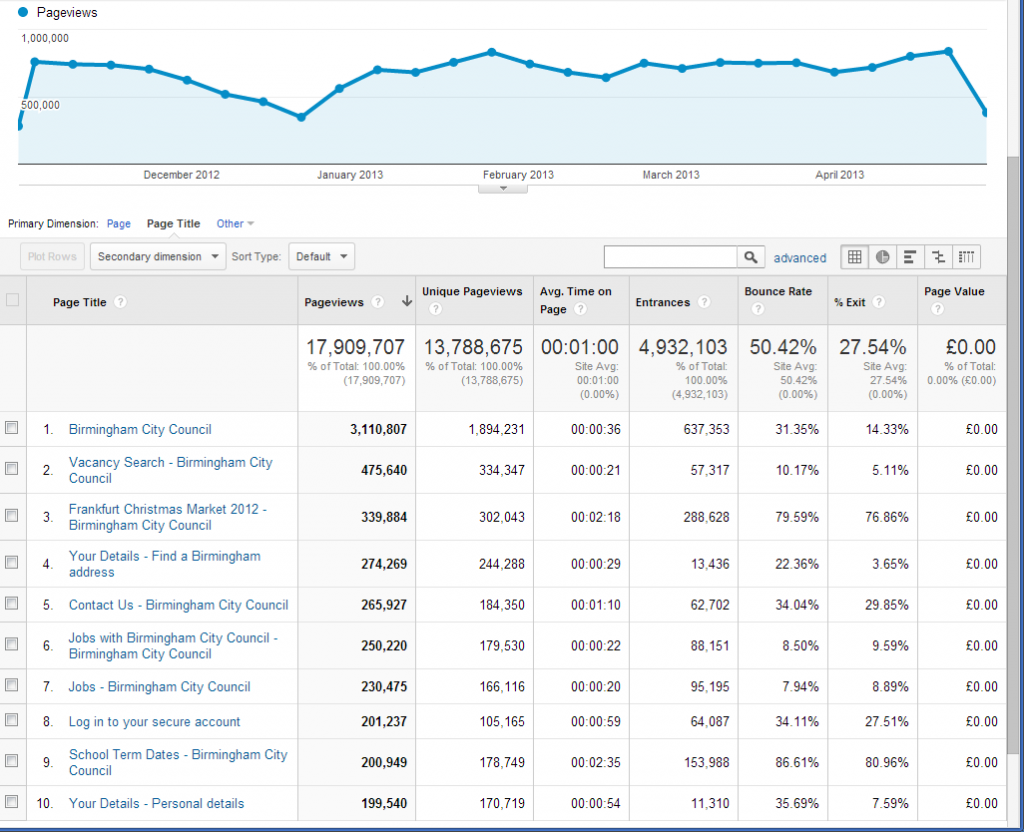
But in that same time period all the pages about gritting combined only received 13,845 pageviews (0.08% of the total), with the main gritting landing page getting half of those at 7,892 pageviews, the page explaining the priority system on 1,064 pageviews, and the individual alphabetised road name pages receiving 538 and fewer pageviews:
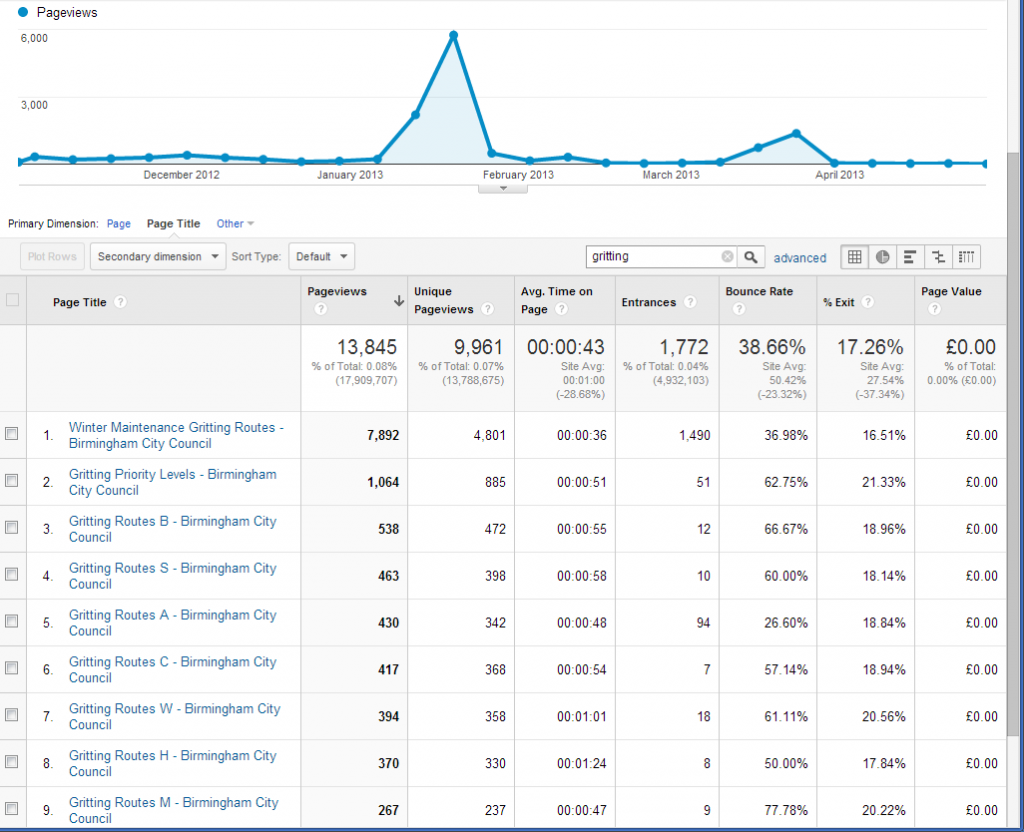
Or putting in page ranking terms, the gritting routes landing page was the 284th most popular page during the extended winter period, and if the whole suite of gritting pages was just one page (and those numbers above give us good grounds to consider the extent to which all the information might better be conveyed on just a couple of pages) it would have been the 173rd most popular page:
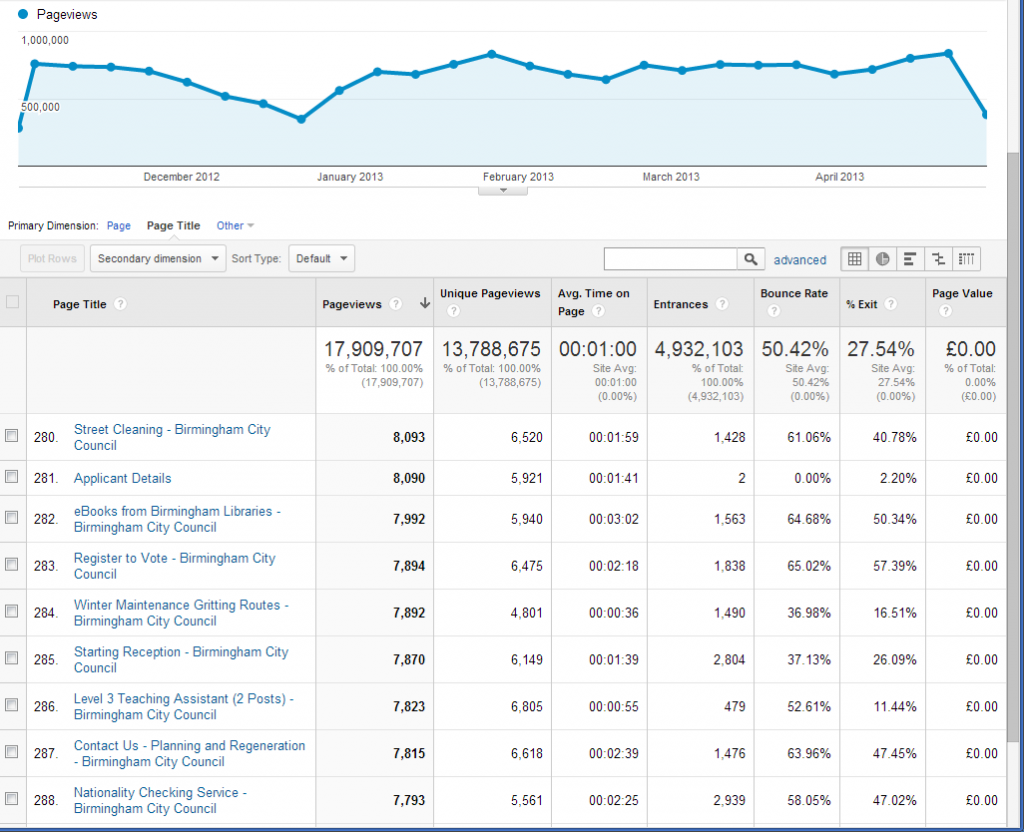
OK, so we had a long winter but it wasn’t snowing and freezing the whole time – there were two peak periods, at the end of January and again at the end of March, when the gritting pages received particular attention.
Narrowing our view into the higher of those two peak periods, between 13 and 26 January, we see the total pageviews on the site came to 1,437,086, the sum total of gritting pageviews was 7,944 (proportionately a bit higher at 0.55%), and the gritting routes landing page at 4,369:
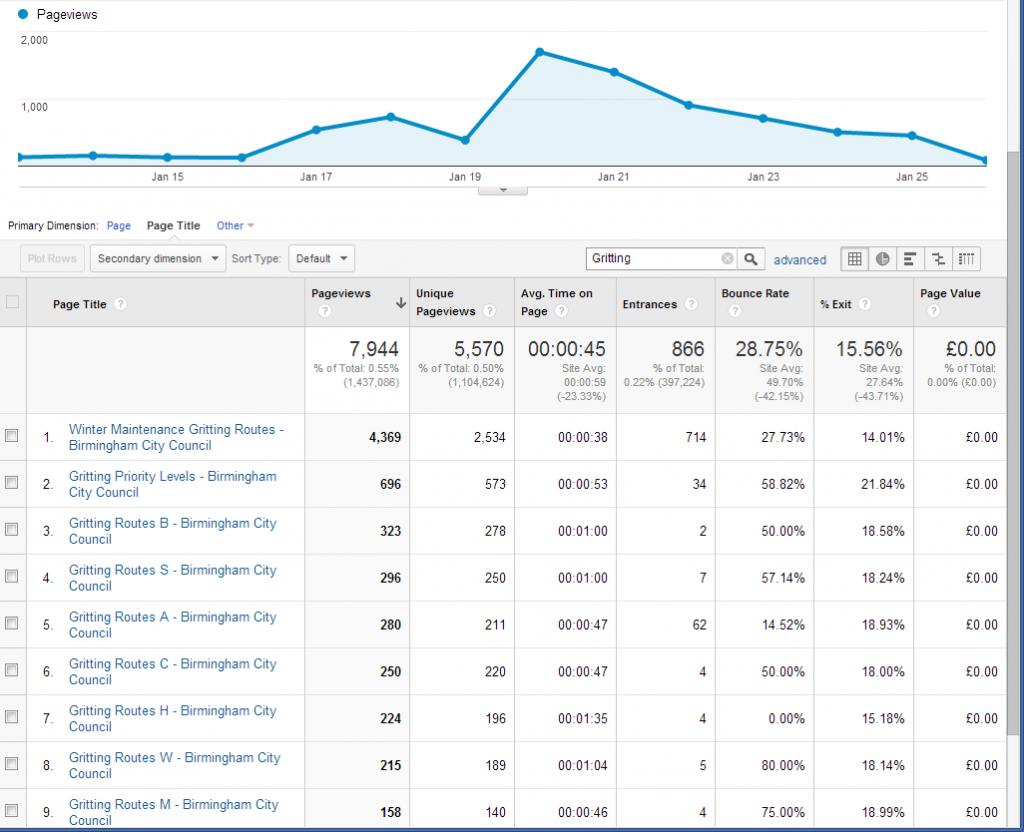
Or in ranking terms, the gritting landing page coming in at 47th:
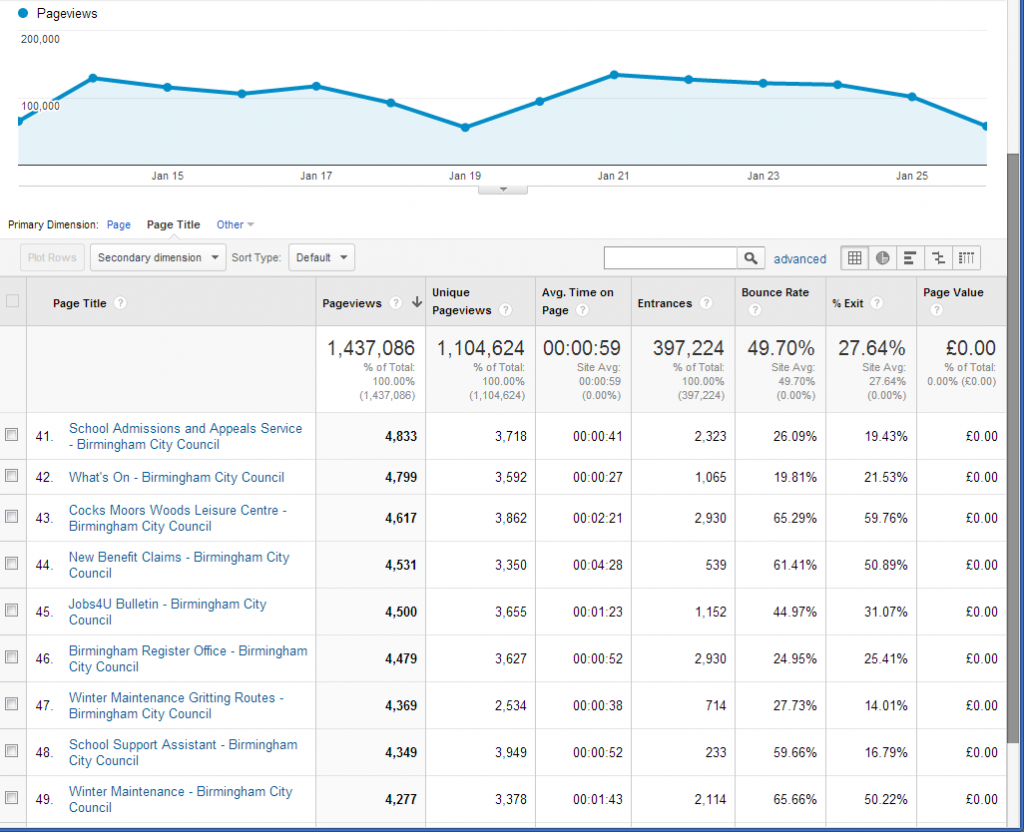
So on the basis of using statistics to drive placement in the key popular pages area, for this year gritting routes just won’t get a look in – primary school admissions, swimming pools (even uniquely on its own the Stechford Cascades page), the register office, and the Brasshouse Language Centre all can evidence higher claims to that important piece of screen real estate.
But all is not lost for fans of true grit – whilst the popular pages section is driven almost entirely by statistics, in the area of the lower half of the page we call the connecting wall we have more scope for the inclusion of links we deem to be important even if interest isn’t particularly high. So instead this year we’ve made the decision that during winter fewer people will be particularly looking for information about dropped kerbs (last year during the period being measured totalling 9,581 of the pageviews), so we’ve replaced that link in the bottom right transport box of the connecting wall with a link to the main gritting and winter maintenance page.
Eagle-eyed readers may have also noticed something else from the statistics screenshotted in this article about the shape of our access statistics which has implications for how we use statistics for planning the direction of the website – more on that in a future post!
Comment on the original article
Marc Snaith says:
November 8, 2013 at 12:05 pm
Great article Simon, really interesting. Our approach on our home page is to add to link to a winter updates page that contains latest information and links to bus timetable changes, schools closures, office closures, road closures, gritting etc.
This information is amongst the most time sensitive on our website and the link is often only on the homepage for 2-3 weeks during the entire winter period.
The link is added when we receive a weather warning and is removed once analytics shows it is no longer one of the most popular pages.
It is interesting that during January and February 2013, our salting and gritting routes page received 50% of its visits in 3 days and one week is responsible for 75% of visits for the two months. Recognising the irrelevance of this information for most of the winter and monitoring the demand is key in meeting the needs of website users.
It is possible to do even better than that. We could monitor hourly trends to make home page links even more relevant. Analytics shows us that winter information is often accessed at specific times of day. Taking the most popular day for winter travel info – Monday 21 January, 84% of visits were before 2pm. If we want to remove a link when it is no longer popular, then with better monitoring we can be even more specific and identify the moment content is no longer popular.